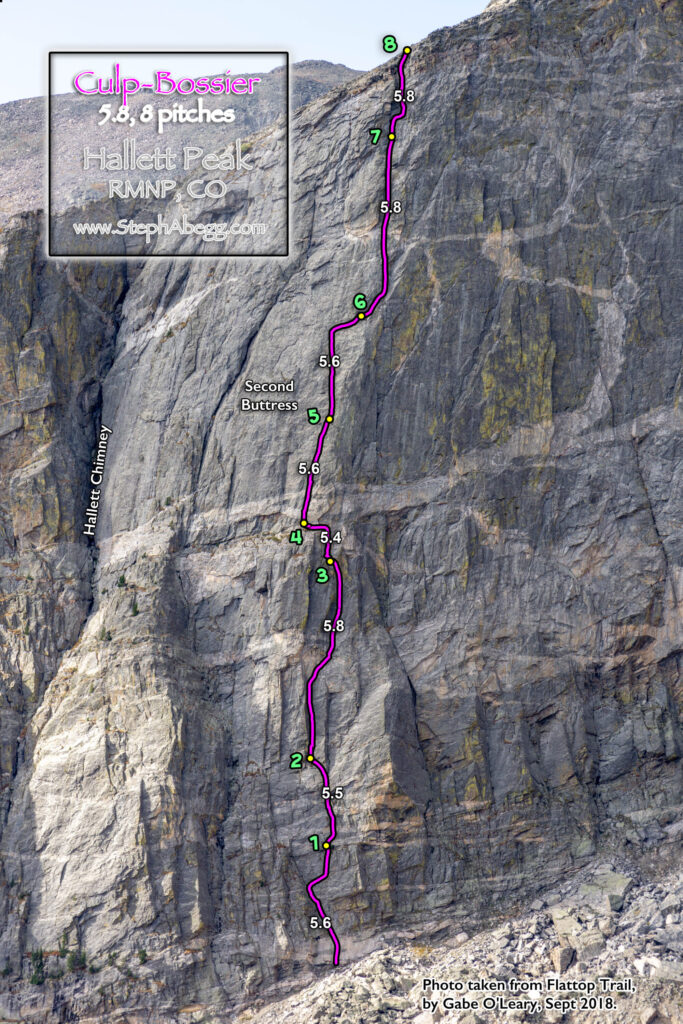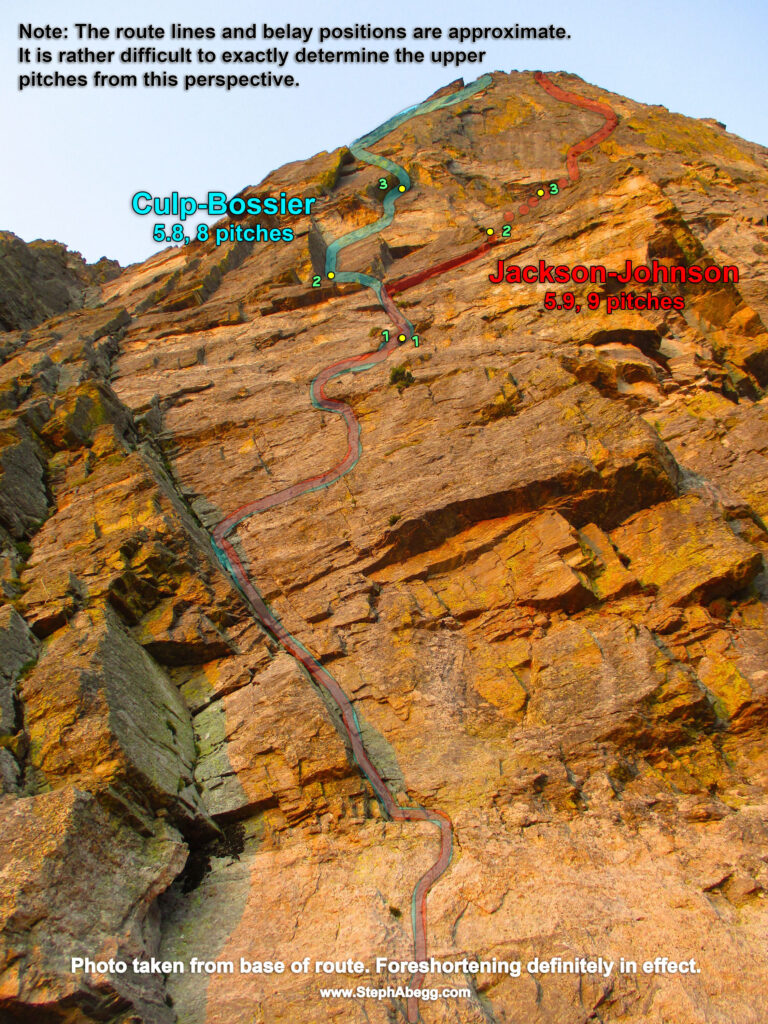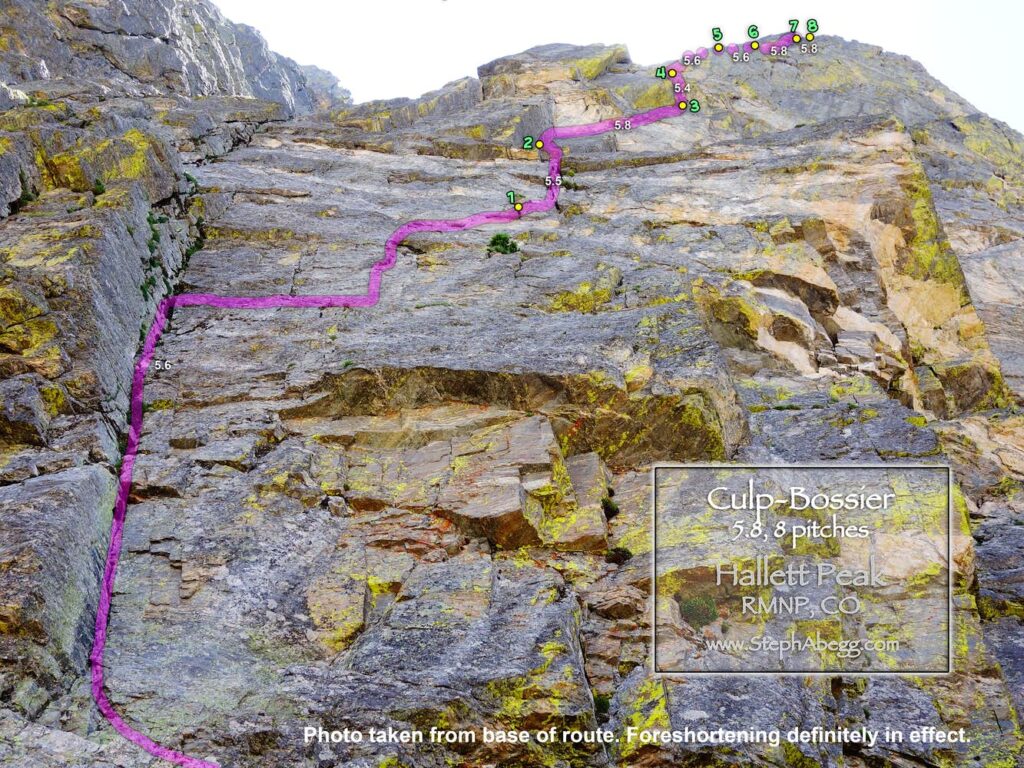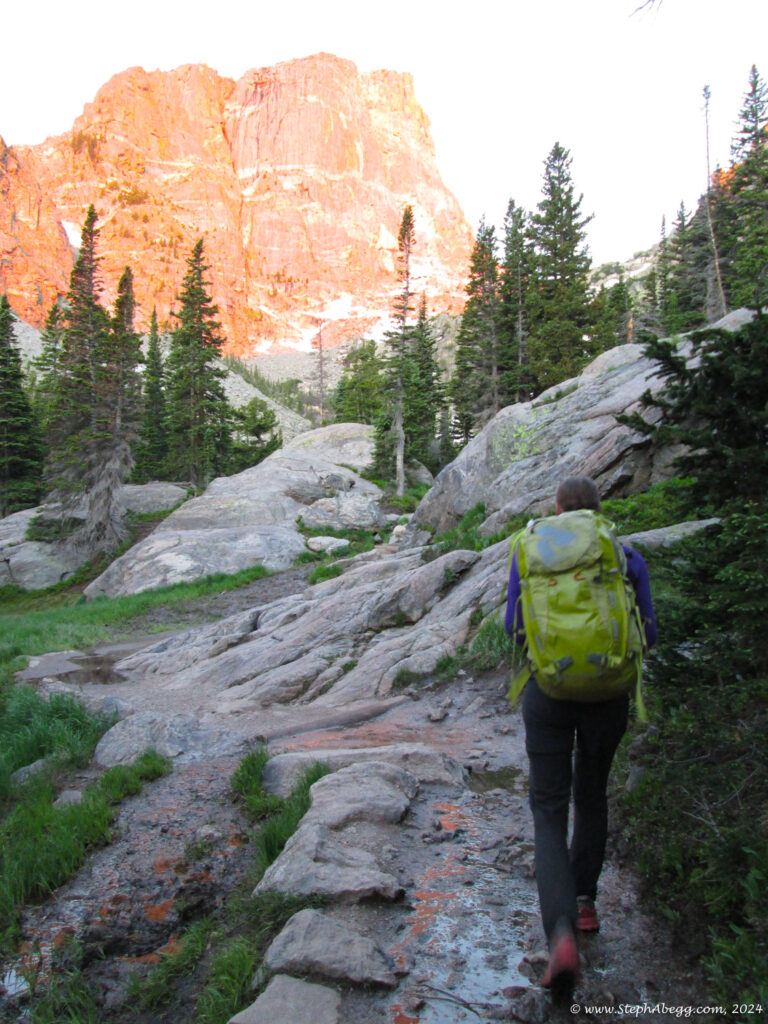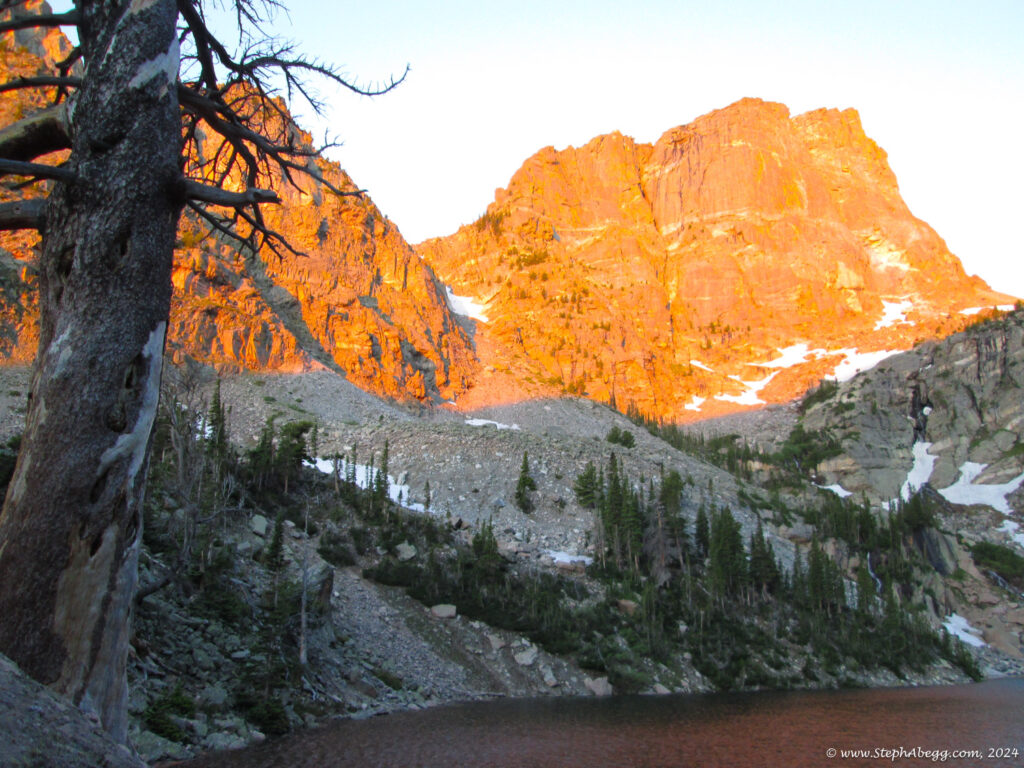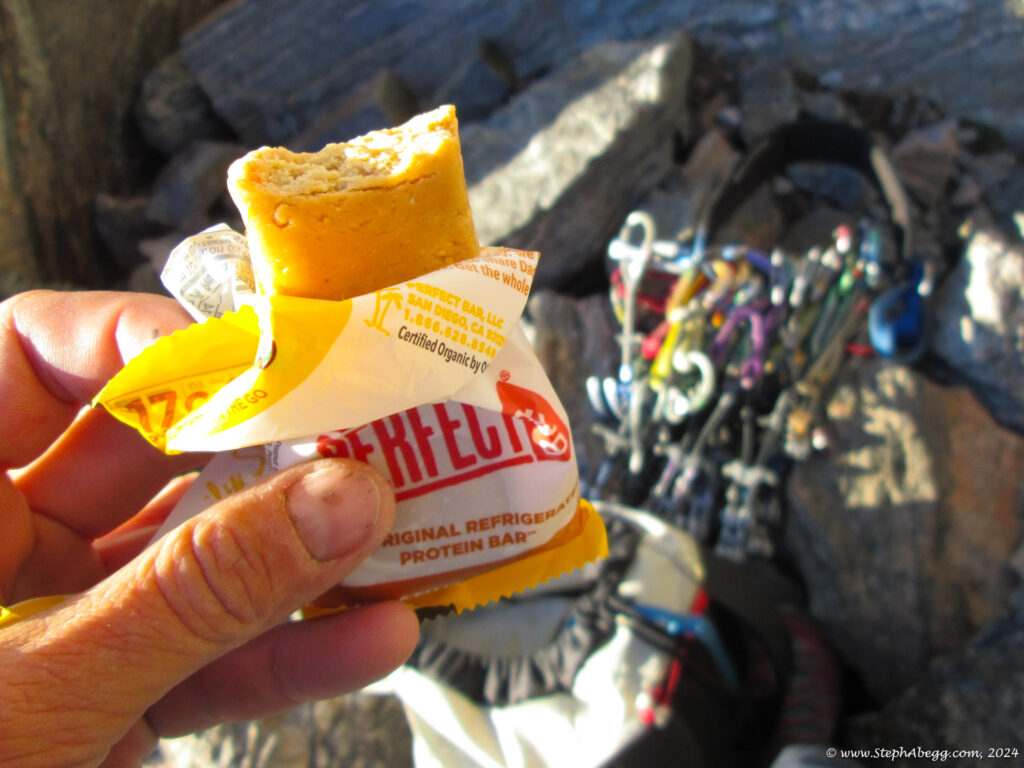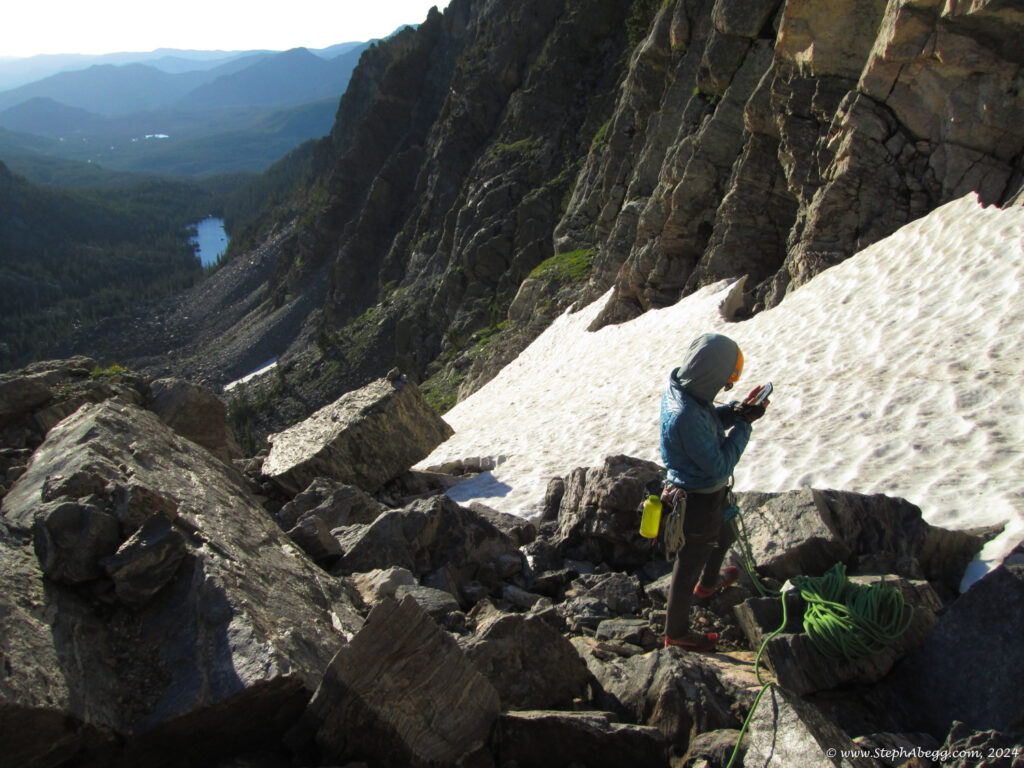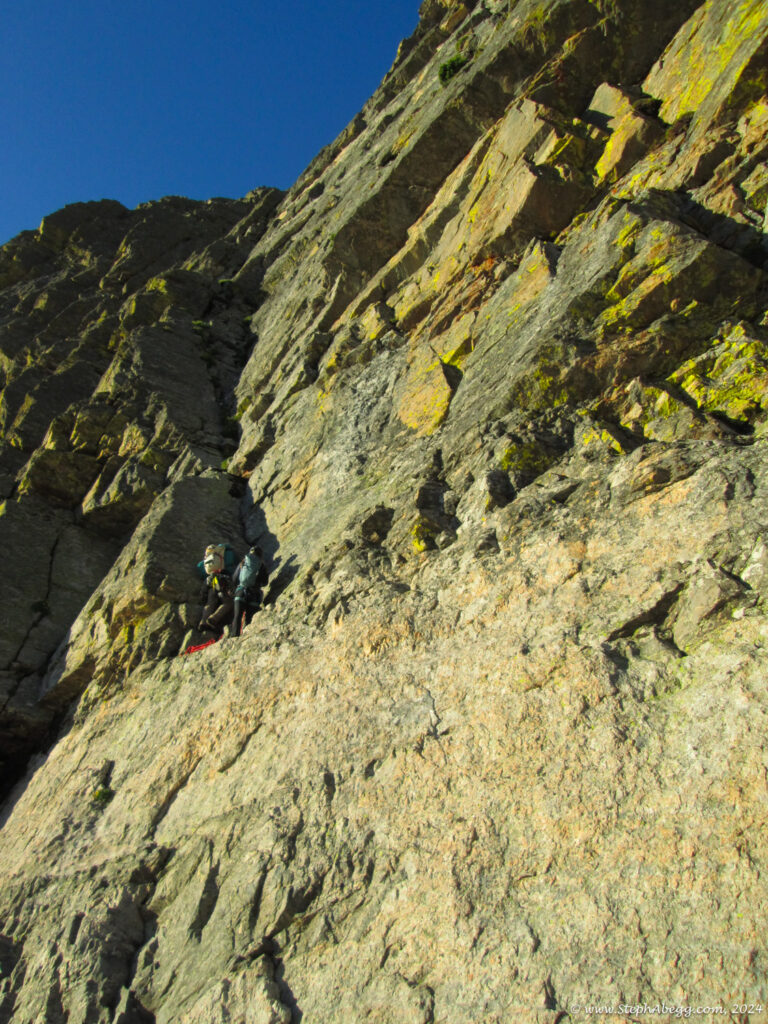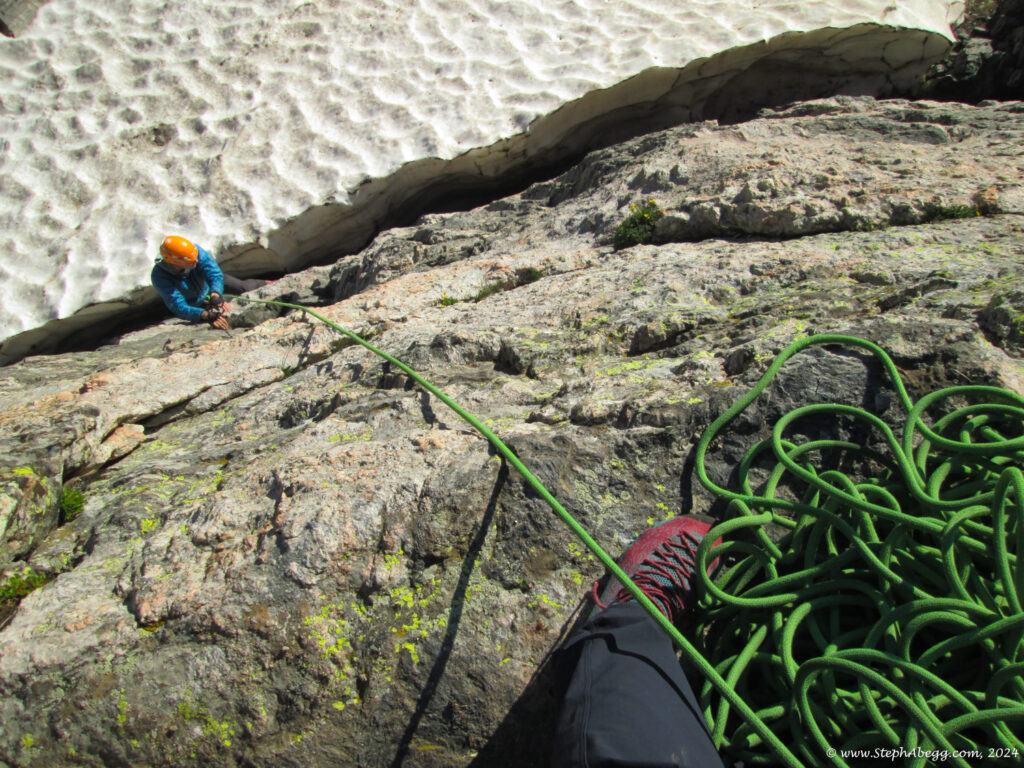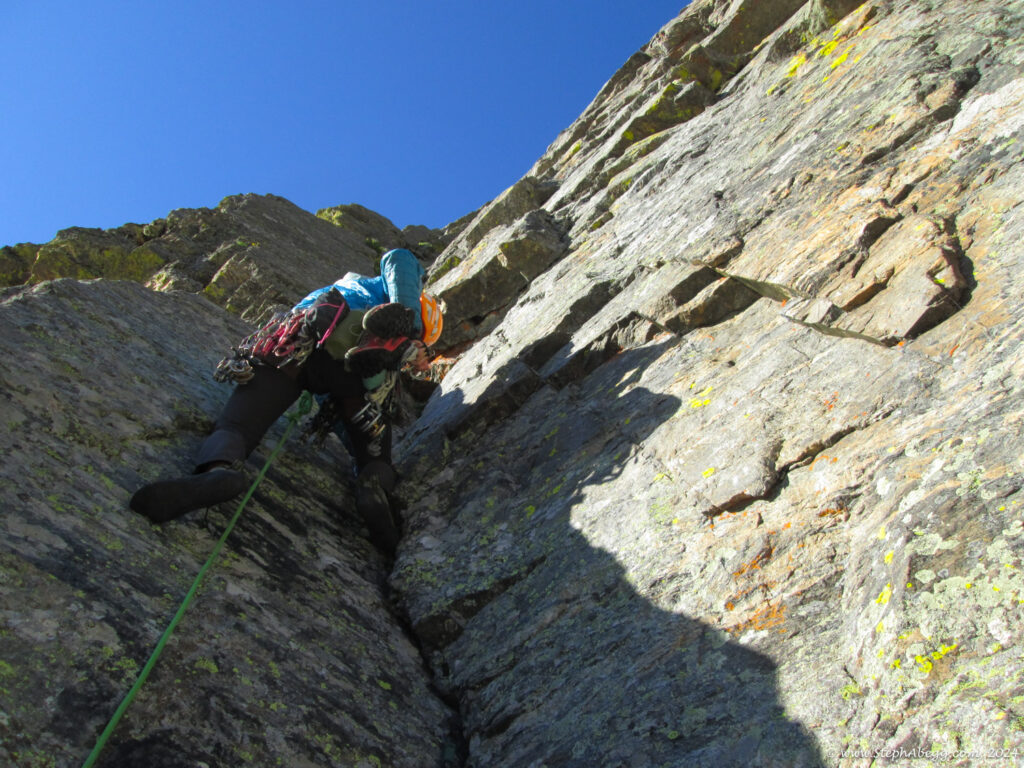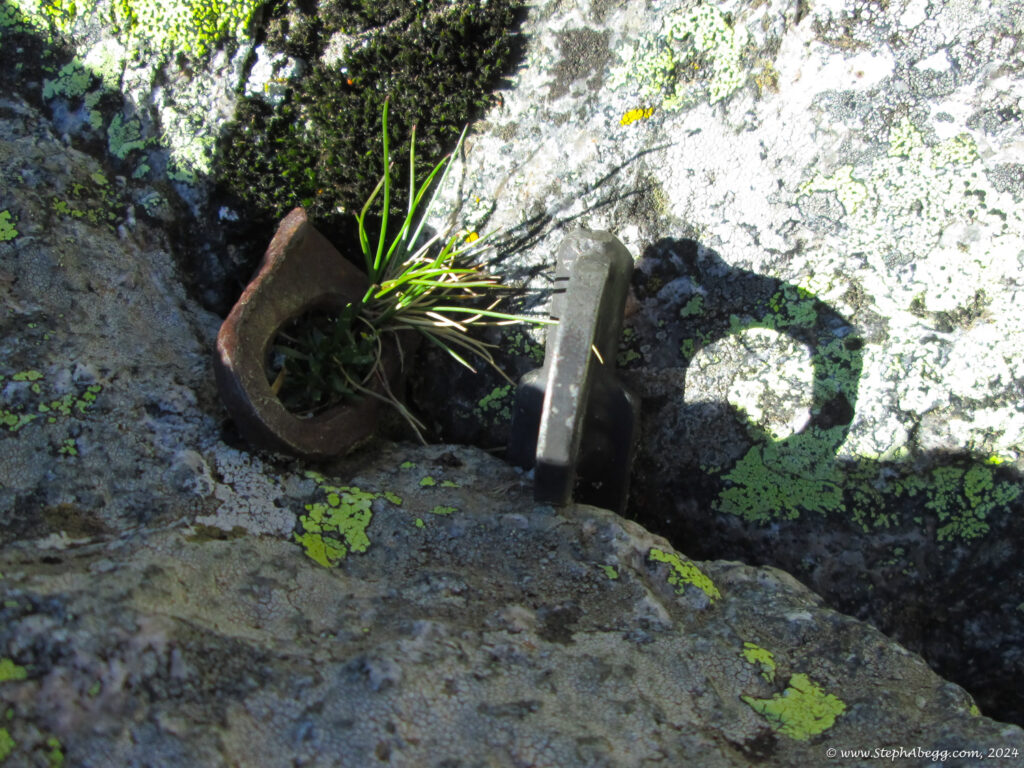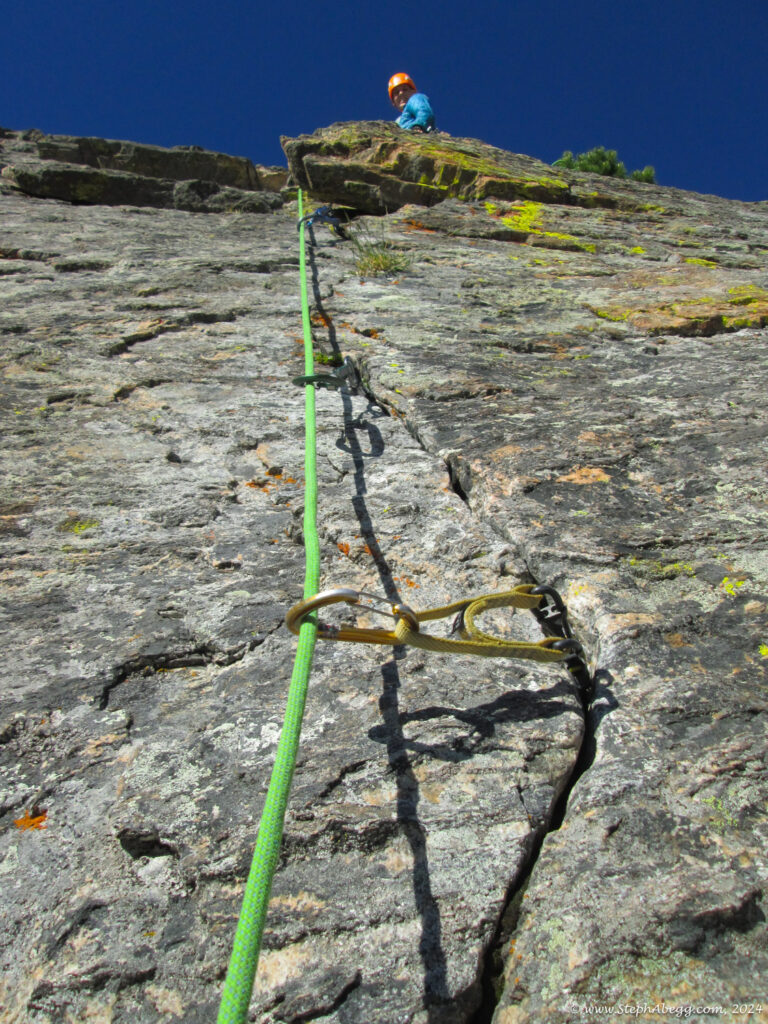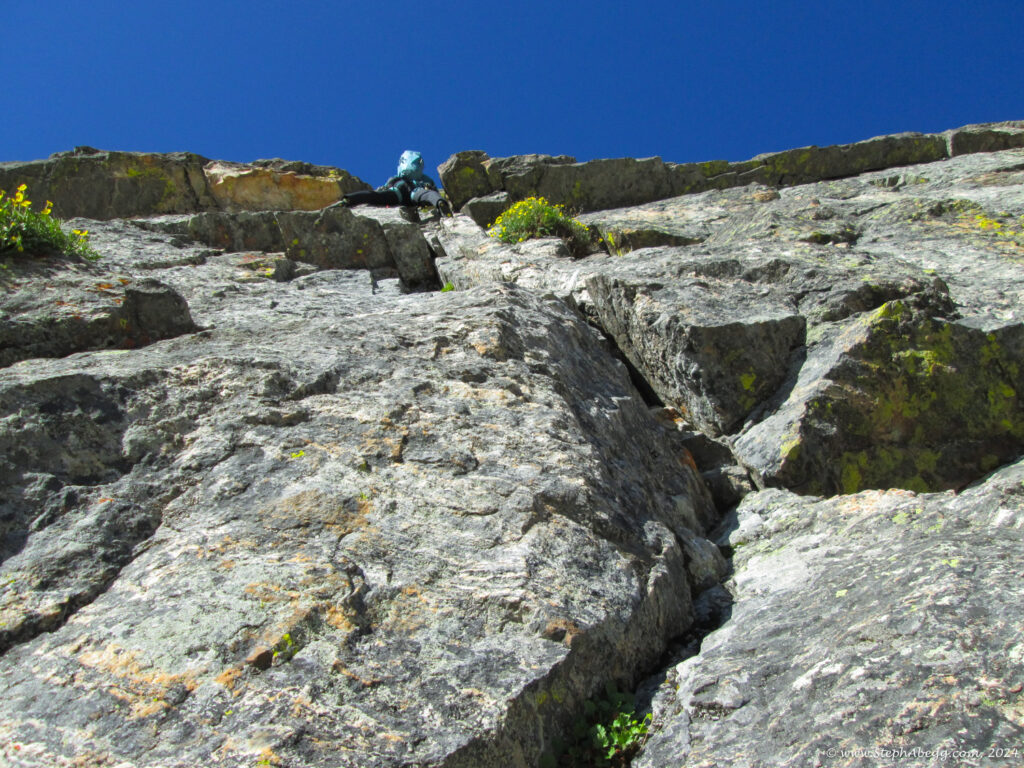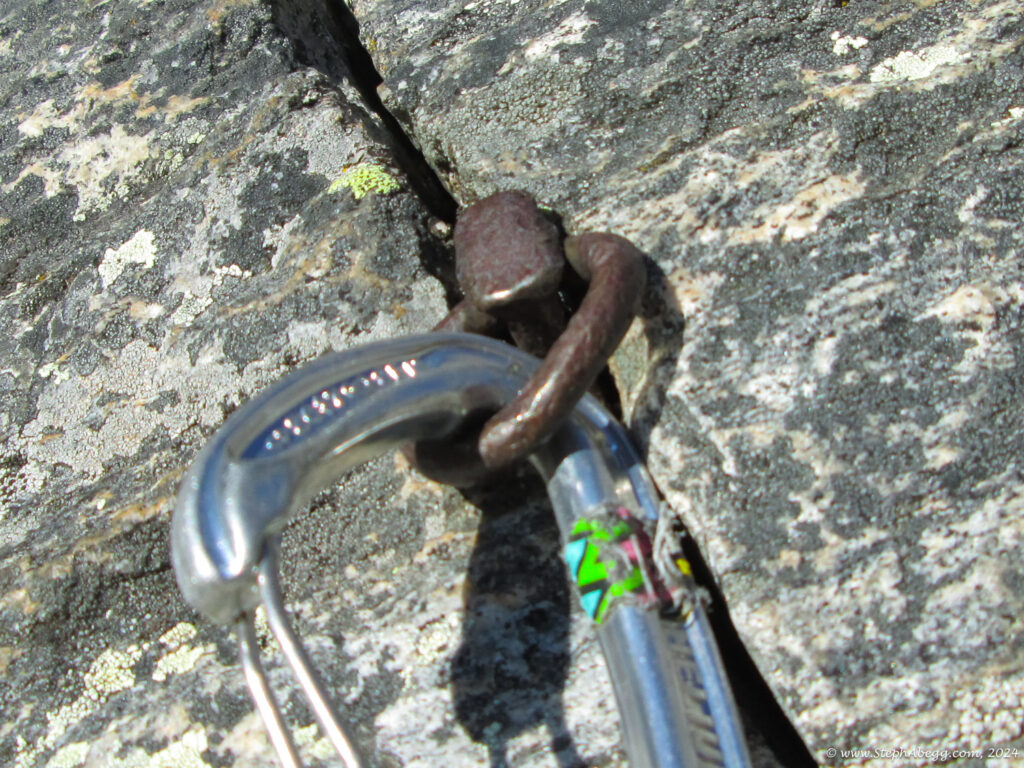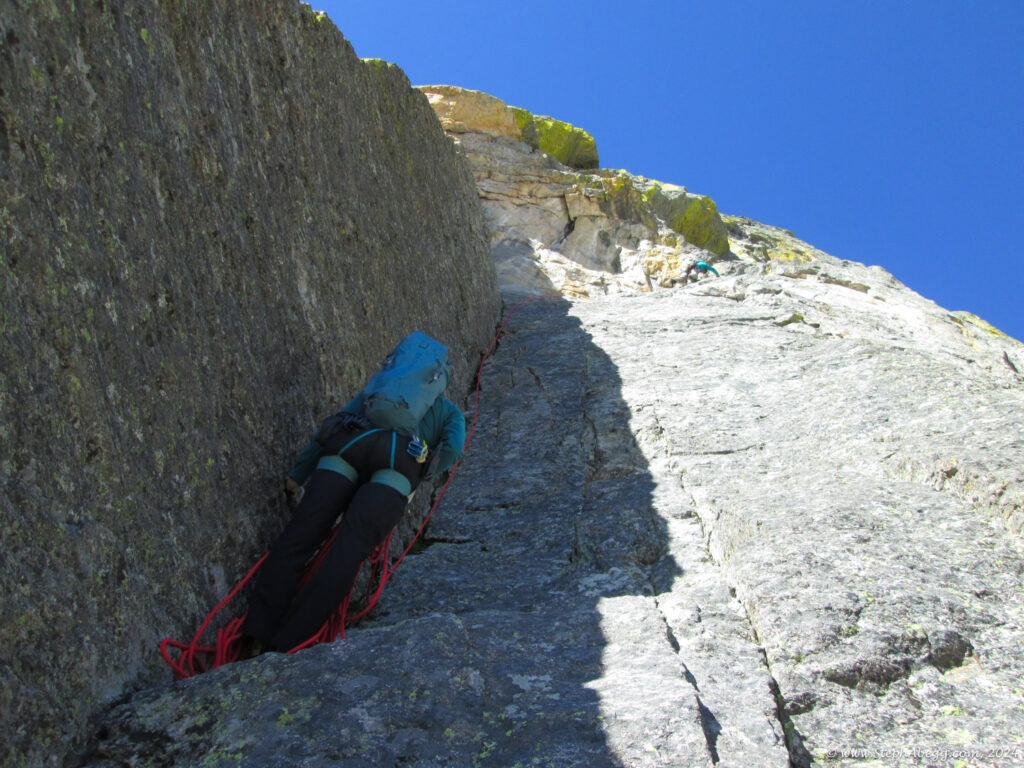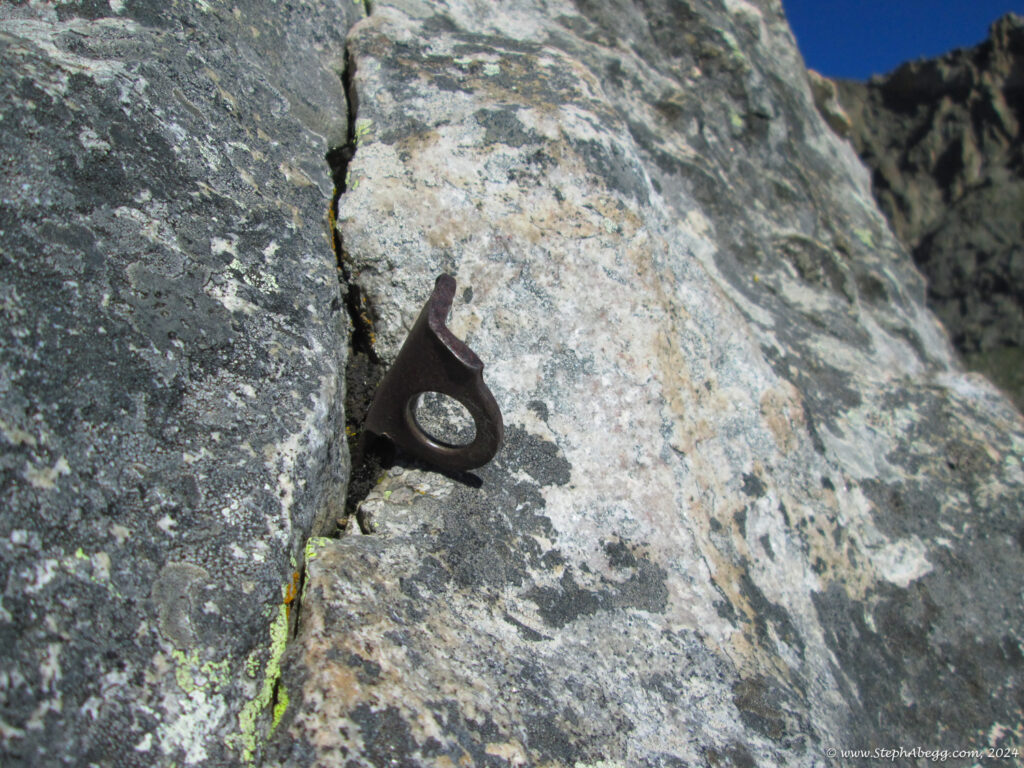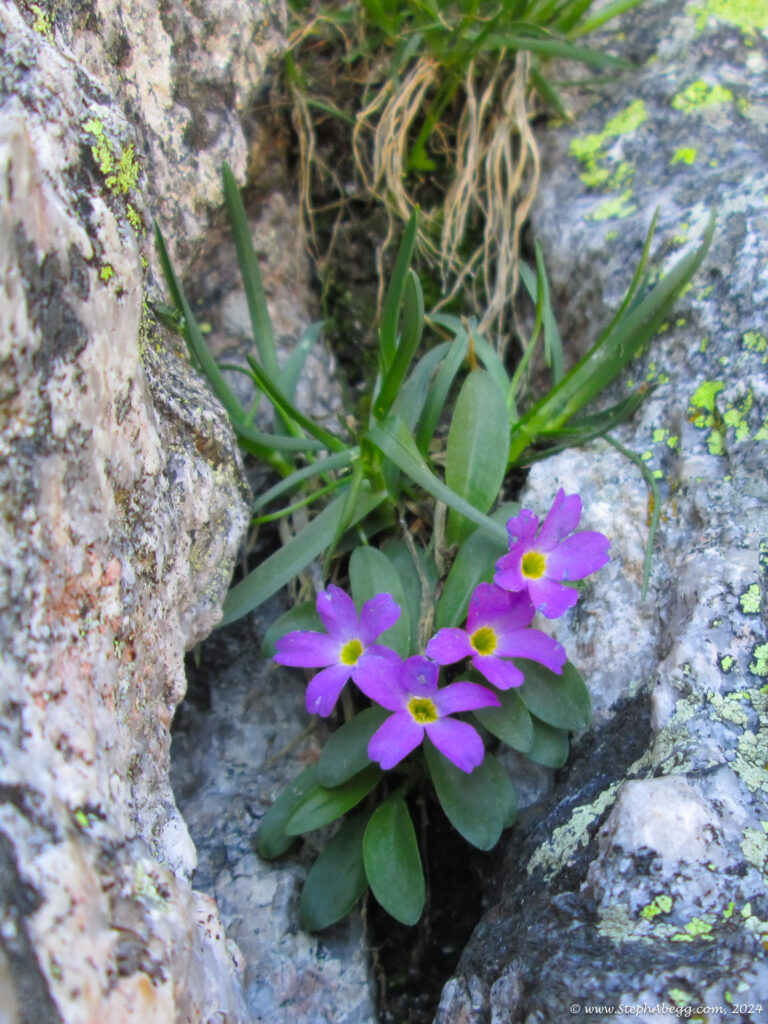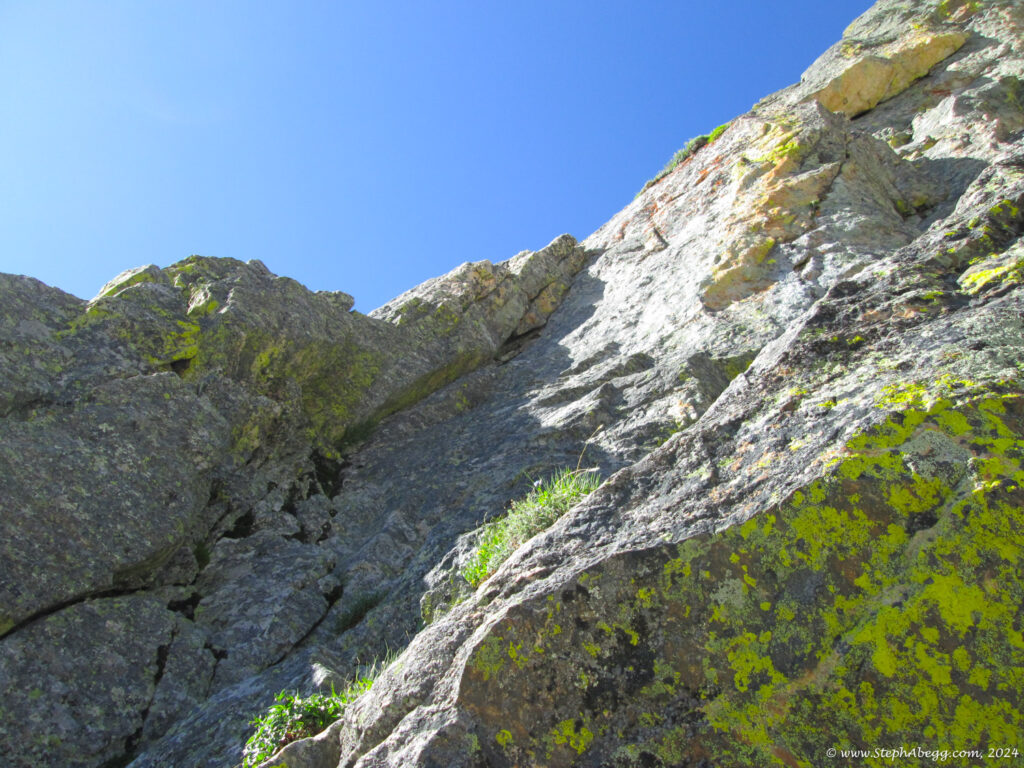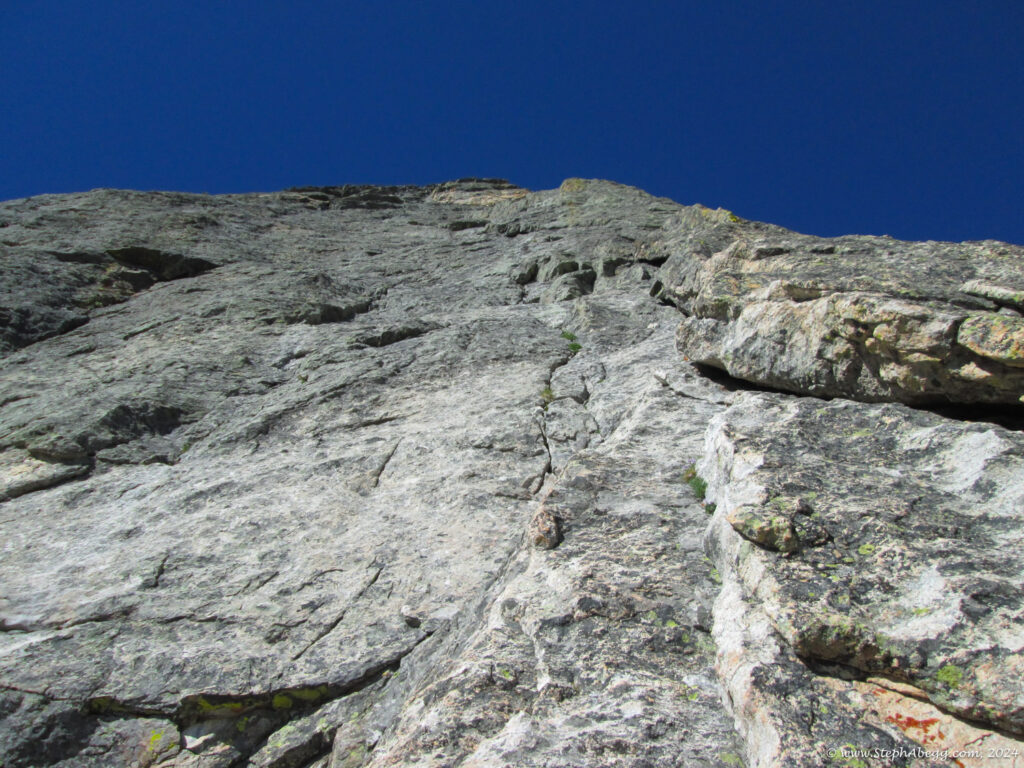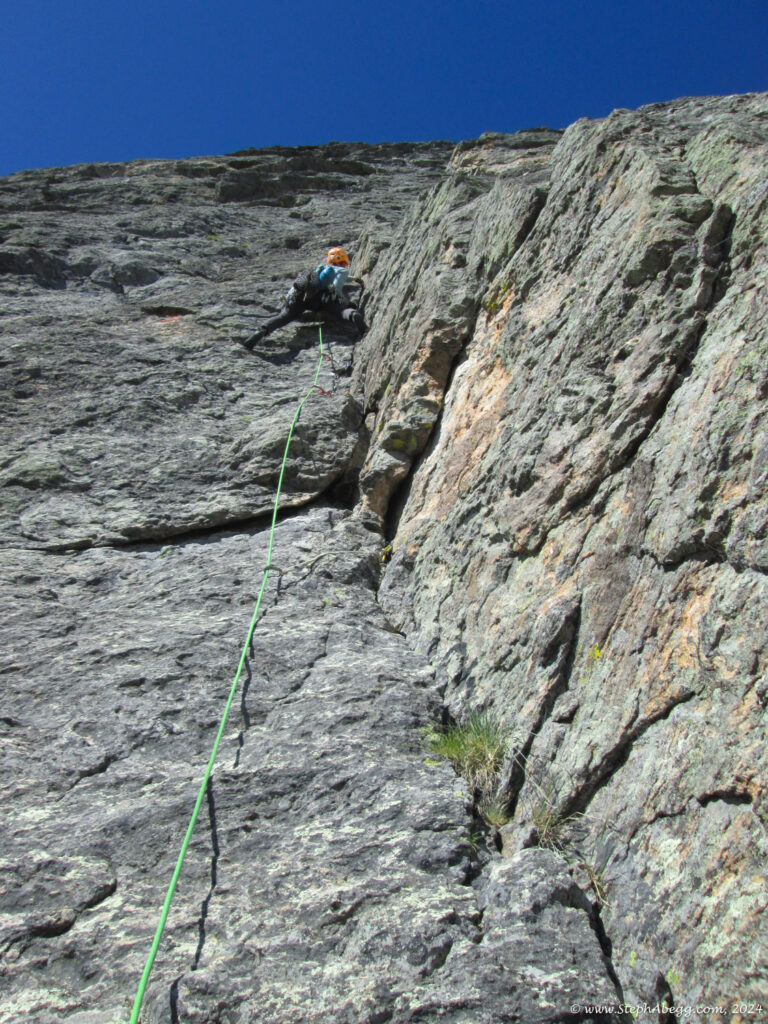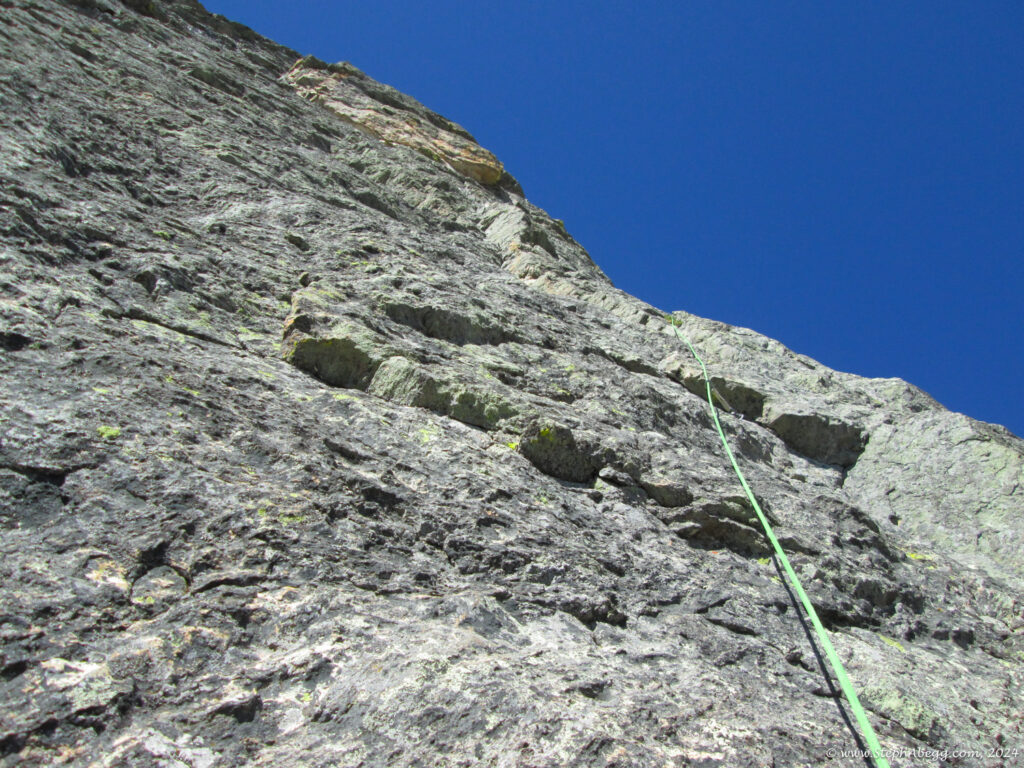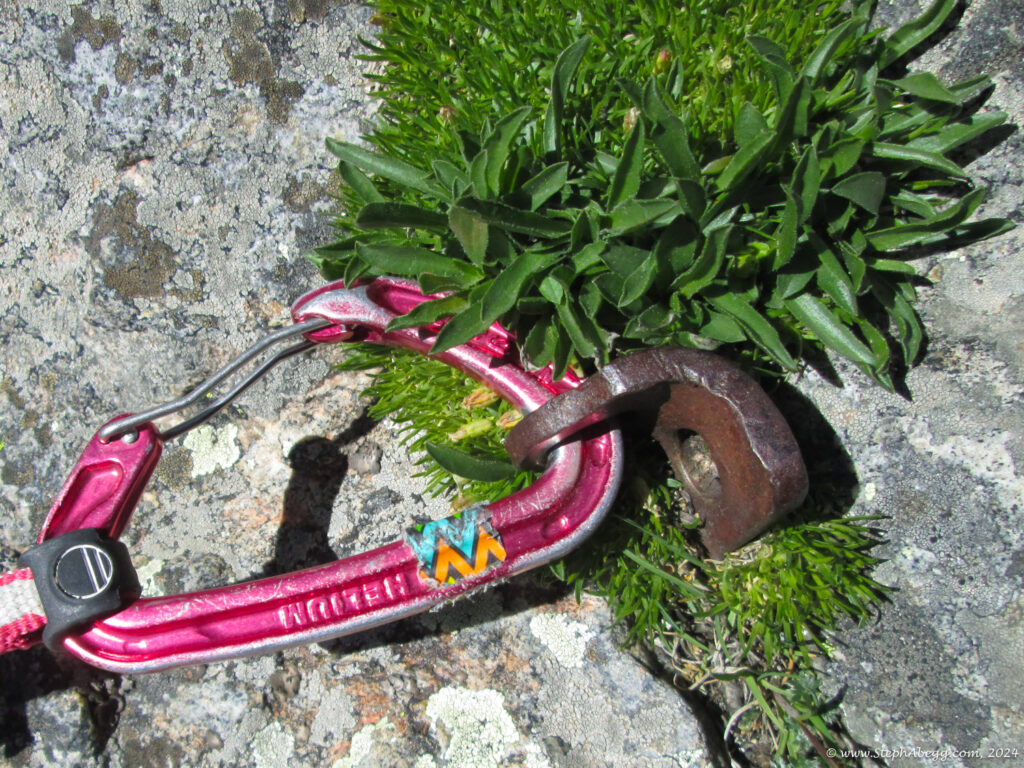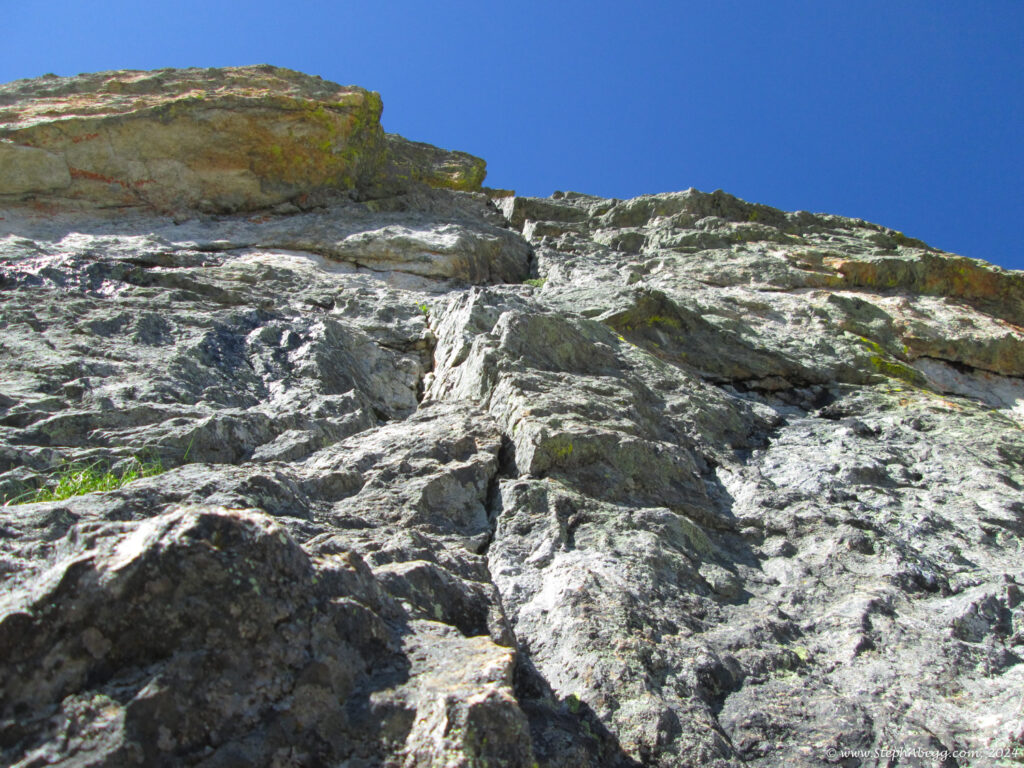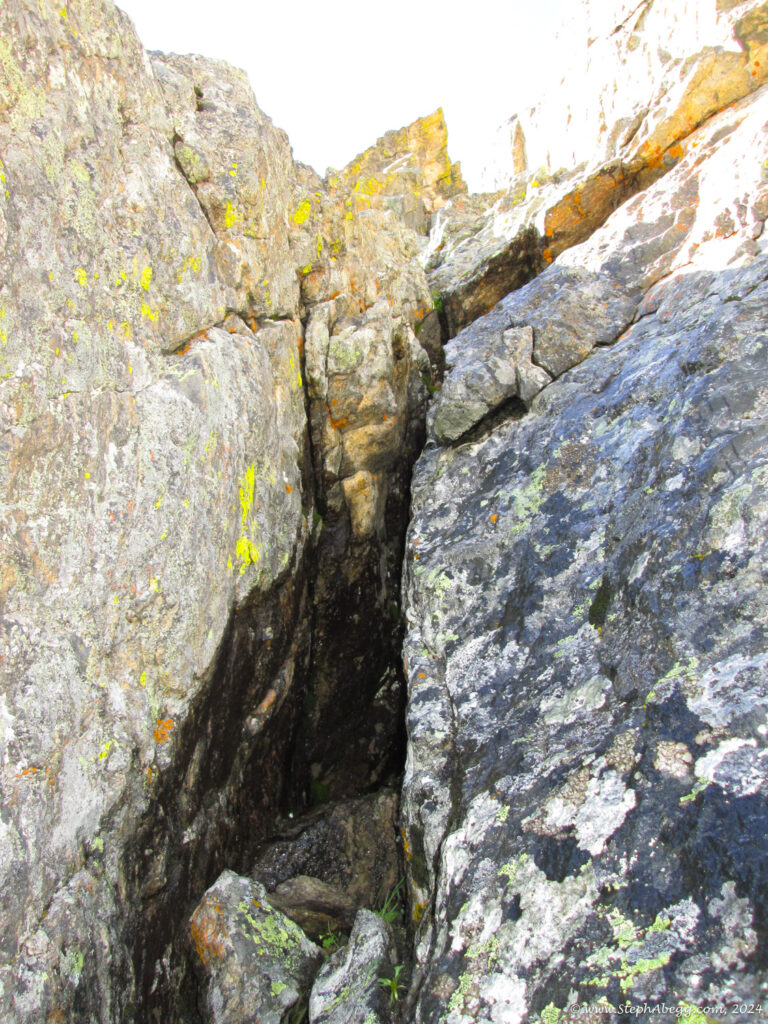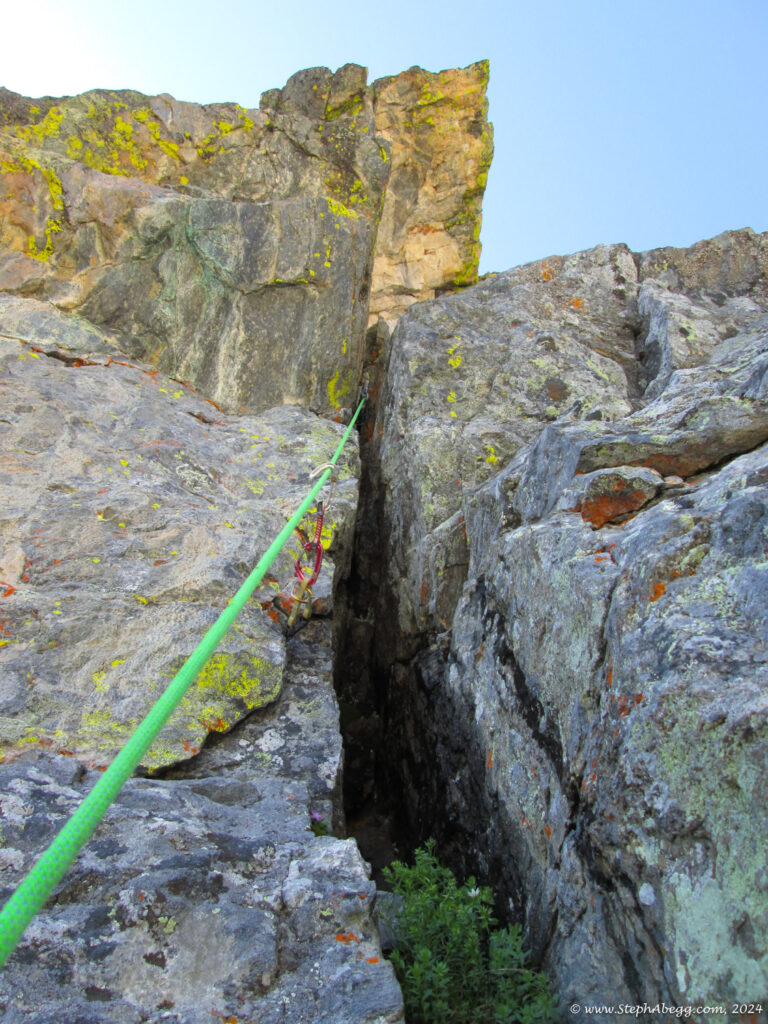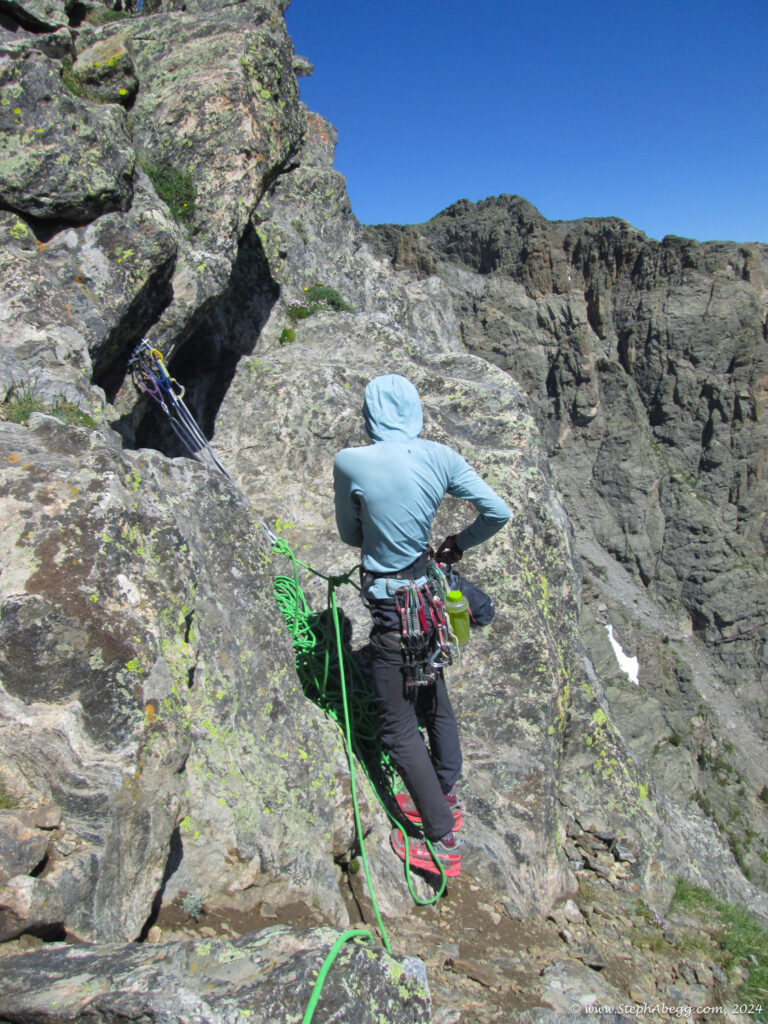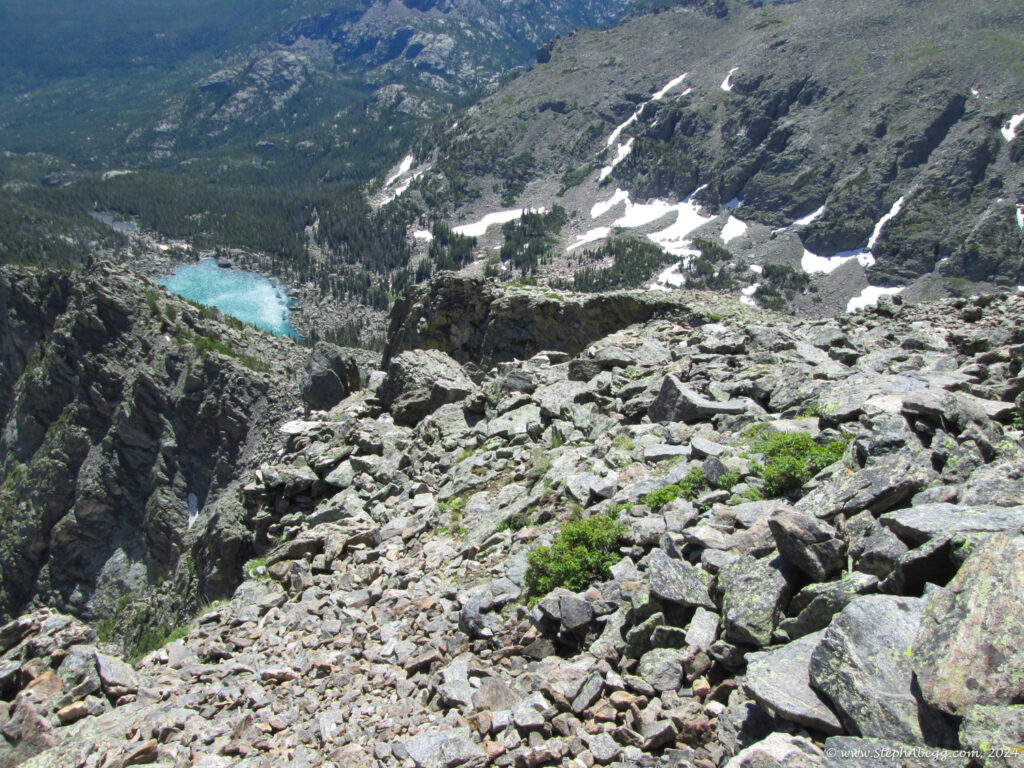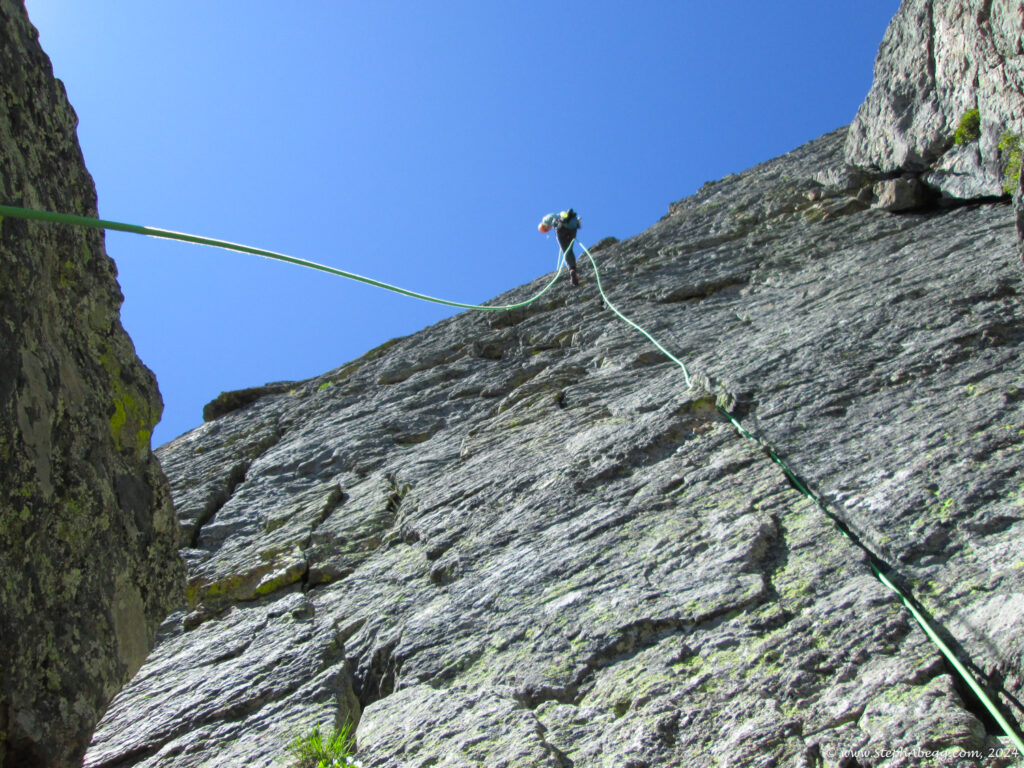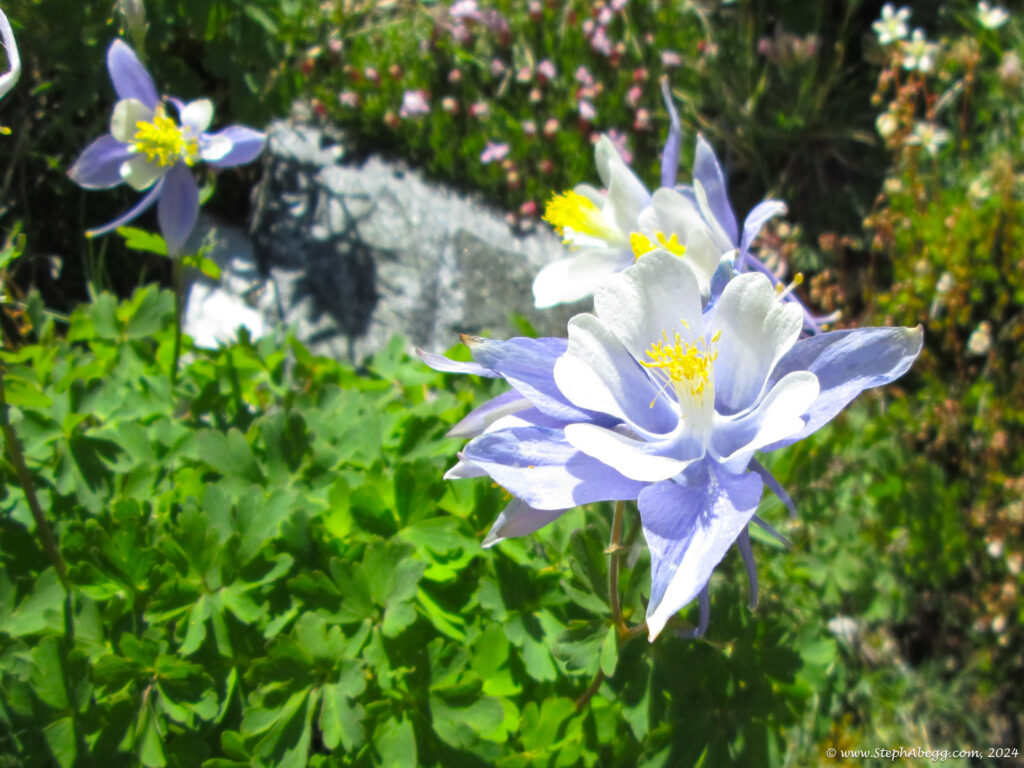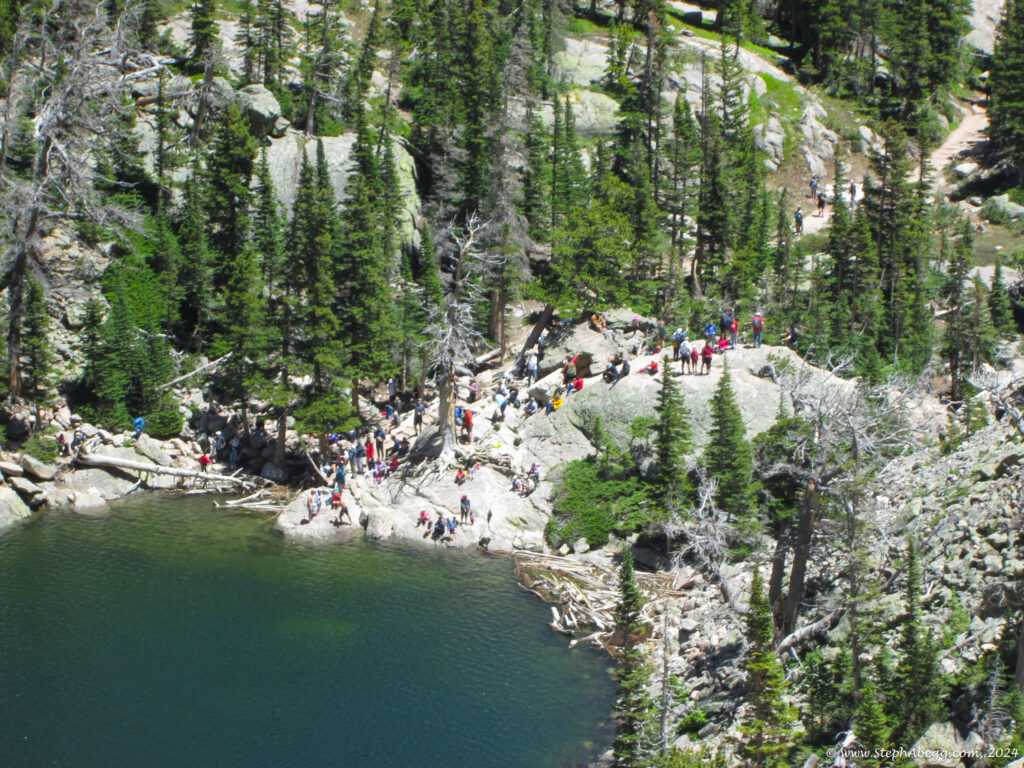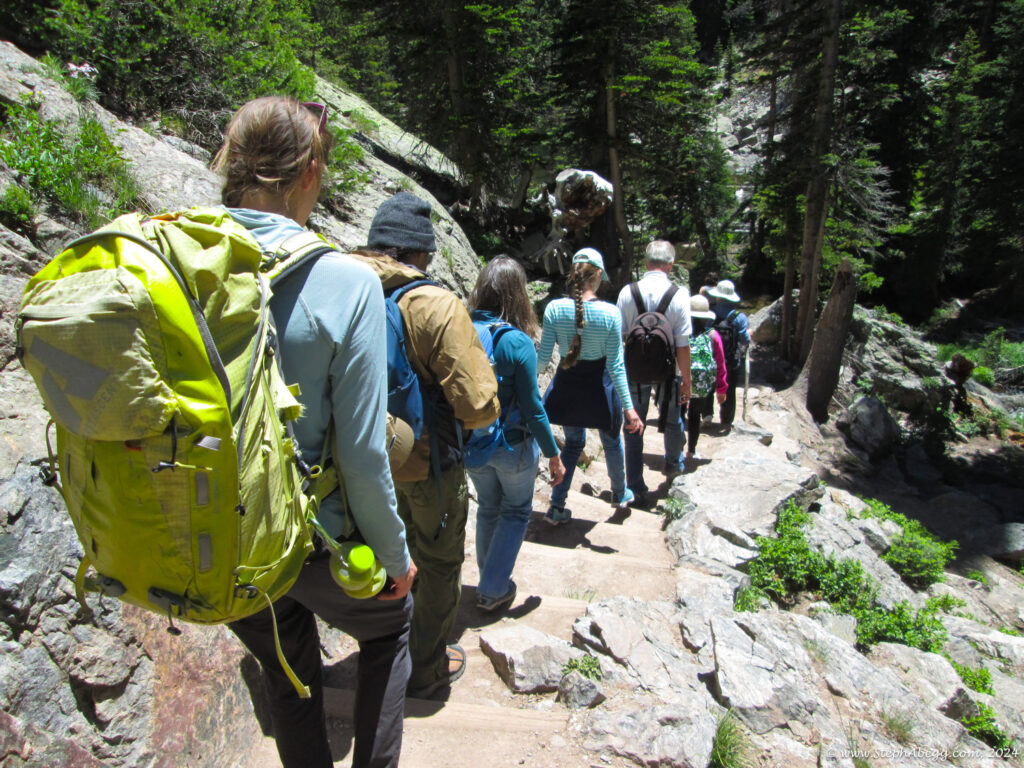The northern profile of Hallett Peak is a hallmark of Rocky Mountain National Park, partly because it is so distinctive and partly because Hallett is visible from near the Bear Lake Trailhead, the most touristed trailhead in the park. The north face of Hallett is divided into three distinct buttresses: the First, Second, and Third Buttresses. The Second Buttress features the cleanest, sheerest rock. The classic
Culp-Bossier route ascends the exposed prow of this buttress in 8 pitches.
(Hallett Peak has long been on my radar because the
Northcutt-Carter route up the Third Buttress is included in Fifty Classic Climbs of North America. However, in July 1999, the first two pitches of the
Northcutt-Carter route collapsed, and getting onto the route now involves some tricky climbing through friable terrain. As a result, the
Culp-Bossier route seems to have stepped into the role of the must-do classic route on Hallett (Beckey lists the
Culp-Bossier route in his book Hundred Favorite North American Climbs). Update: The following summer, I climbed the
Northcutt-Carter route, which involved a spicy 10b start to get to the upper pitches. In my opinion, I think that
Culp-Bossier and
Northcutt-Carter are about equal is quality and both are worthy adventures. If you don't like the idea of climbing a loose pitch of 5.9+ rock to get onto the
Northcutt-Carter route, then the
Culp-Bossier is a good choice.)
We climbed
Culp-Bossier as a team of three. We discovered that the belay stances on this route are not too comfortable for three, but we made it work. Dow and I swung leads while Tristyn—this was his first alpine multipitch route!—enjoyed following. Due to our early start to avoid a potential afternoon squall, we topped out on the summit ridge just before noon; we enjoyed a nice lunch basking in the sun before heading down. The approach and descent to Hallett are quick, and we were as efficient as can be for a team of three, so we were back to the car by early afternoon. Plenty of time to regroup and climb again the next day!
This page gives a trip report for our climb. Enjoy!

